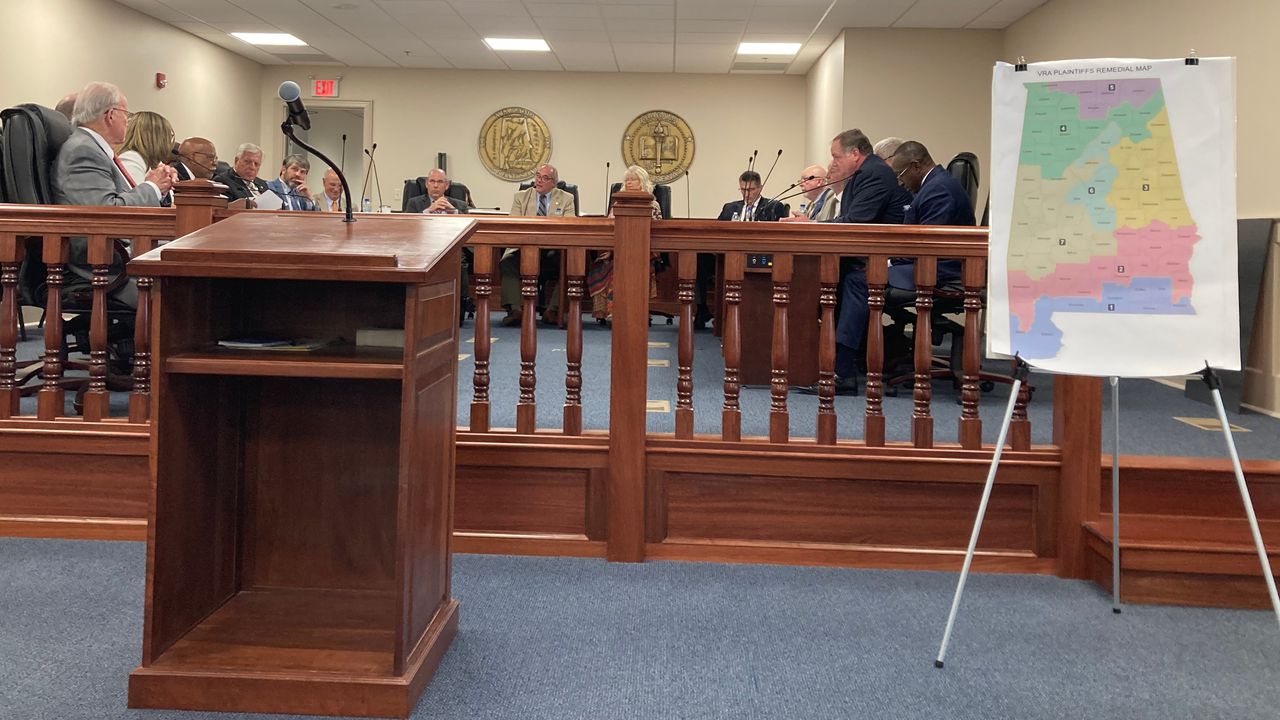Redistricting plans with 1 Black district advance in Legislature
Republican-backed proposals to redraw Alabama’s congressional districts won approval in Senate and House committees on Tuesday.
Democrats on the Senate committee said the GOP plan would not fix Alabama’s current map and predicted the federal court, not the Legislature, would eventually draw the state’s map for next year’s elections.
“This map suggests to me that whoever drew it just didn’t want to choose winners and losers and they want the court to draw a map,” Senate Minority Leader Bobby Singleton, D-Greensboro said. “This is what this says to me. We don’t want to come up with something that’s real. We want the court to really draw it.”
The Legislature is under a mandate to draw a new district map after the U.S. Supreme Court ruled in June that the current map, with one majority Black district out of seven, most likely violates the Voting Rights Act in a state where one-fourth of residents are Black. The Supreme Court ruling affirmed the decision of a three-judge district court last year, which said the remedy is to add a second majority Black district or one that is close to majority Black.
The three-judge court has given the Legislature until Friday to approve a new map.
The plan approved by the Senate committee Tuesday maintains District 7 as the only majority Black district, although the Black percentage of the voting age population would drop from 57% to 50%.
Sen. Steve Livingston, R-Scottsboro, the co-chair of the Legislature’s reapportionment committee and sponsor of the plan, said it would comply with the court’s mandate for a second opportunity district for Black voters by increasing the Black voting age population in District 2 from 32% to 38%.
But Sen. Vivian Davis Figures, D-Mobile, reading from the court order, said the 38% figure plan falls short of the mandate for a second district with a Black “voting-age majority or something quite close to it.”
“Close to it, to me, is 47, 48 or 49, “ Figures said.
Livingston said his plan would comply with the Voting Rights Act. The senator said his plan was not drawn based on race but resulted in a fair racial outcome and followed traditional redistricting principles such as compactness and keeping communities of interest together, including Gulf coast counties, the Wiregrass, and the Black Belt.
The committee approved Livingston’s bill by a vote of 11-5, with the four Democrats on the panel voting against it. Sen. Andrew Jones, R-Centre, also voted against the plan because it split Etowah County, which is in his district.
The committee voted 12-4 along party lines to reject plans proposed by Figures, Singleton, and Sen. Rodger Smitherman, D-Birmingham.
Figures’ proposal would have created two majority Black districts by increasing the Black voting age population in District 2 to just above 50% and maintaining District 7 as majority Black. It is the plan supported by the Black voters and organizations who won their lawsuit challenging the current map.
Livingston’s plan was a revised version of one approved by the GOP-led reapportionment committee on Monday. That plan would increase the Black voting age population in District 2 to 42%.
It was approved by a House committee Tuesday. Rep. Chris Pringle, R-Mobile is sponsor of that plan, which moves into position for consideration by the full House on Wednesday. The Senate is expected to consider Livingston’s plan Wednesday.
Sen. Kirk Hatcher, D-Montgomery, who voted against the Livingston plan in committee Tuesday, said he did not see how it differed enough from the current plan to fix the likely Voting Rights Act violation.
“I’m looking to see what was the difference in the thought process behind this map that makes it different from the 2021 map that got us back here,” Hatcher said. “Because I’m not seeing that.”
Smitherman said the Livingston plan is not meaningfully different from the current plan and would not pass muster with the federal court.
“I don’t know how we felt that instead of wearing a sports coat, a shirt and slacks, we now are going to wear a sports coat, shirt, and slacks, we’re going to put us a tie on, and it’s going to be different,” Smitherman said. “Just because we put the tie on it, that’s suppose to make it all right, perfect. That’s what we’ve done here.”
